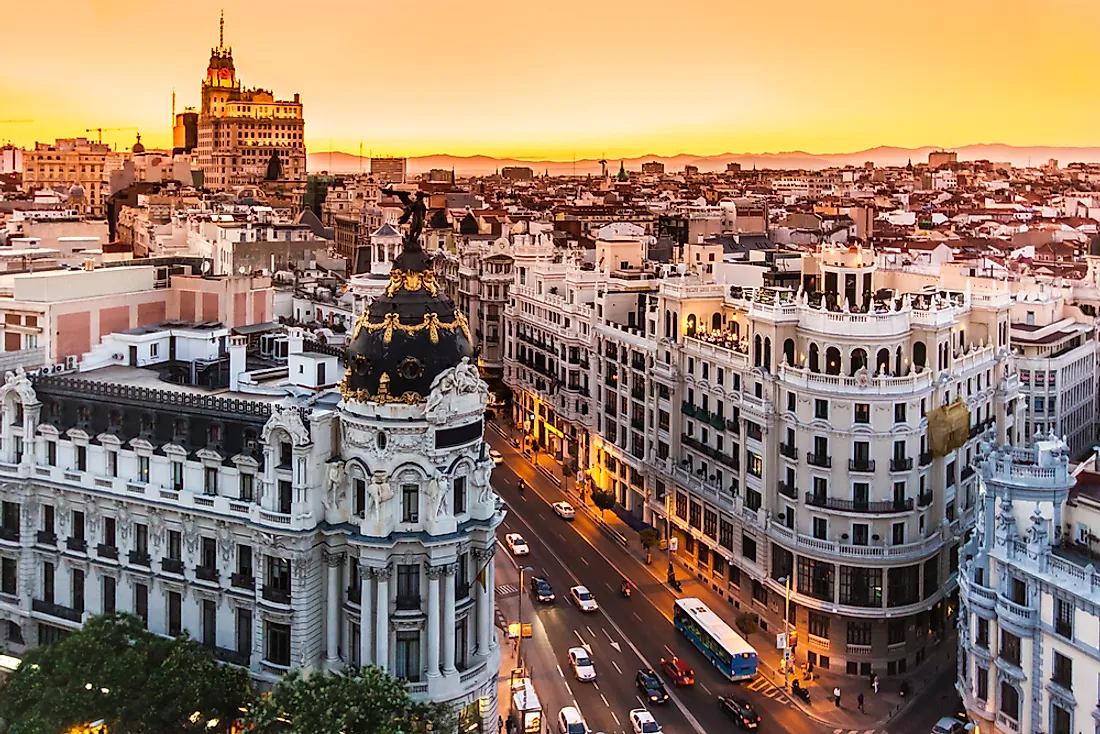What Is The Capital Of Spain?

Madrid is the third-largest city in the European Union behind only London and Berlin. It is the capital and largest city of Spain with a population of roughly 3.2 million. The entire metropolitan area of Madrid accounts for an estimated 6.5 million inhabitants. The city's metropolitan area is also the third largest in the European Union after that of London and Paris. Madrid's municipality covers an area of approximately 233.3 square miles.
Overview Of The Capital City Of Spain
Madrid is a business center, a cosmopolitan city, headquarters for the Spanish government, public administration, parliament and also home to the Royal Spanish family. The city also plays a significant role in the industrial and banking sectors. A large number of industries found in Madrid are situated in the southern region of the city where major food, textile, and metalworking factories can be found clustered together. Madrid has a major influence on fashion, politics, culture, entertainment, science, arts, media, environment, and education. The city is home to two famous football clubs: Atletico Madrid and Real Madrid. Madrid is also best known for its intense cultural and artistic activities coupled with a robust nightlife
The History Of Madrid
The grand metropolis of Madrid traces its roots back to the 9th century during the times of Muhammad I, the 5th Emir of Cordoba. Muhammad I ordered the construction of a fortress on the left bank of the Manzanares River. Later on, the region became a subject of conflict between the Arabs and the Christians. The region was eventually conquered by Alonso VI of León and Castile in 1085, with Christians dominating the city and integrating it as the Crown's property into the Kingdom of Castile. The city center was occupied by Christians while Jews and Muslims relocated to the suburbs. The region's administrative district stretched to the Guadarrama River in the west from the Jarama River in the east and since it was prospering it was known as Villa.
The Economy Of Madrid
Madrid is the largest financial center in Spain and among the largest in Europe with the city`s biggest employers being Drafados, Telefónica, BBVA, Urbaser, Iberia, FCC, and Prosegur. Madrid is home to more than 30 research centers and 17 universities. It also ranks 4th in the EU by gross internal product. The service sector contributes significantly to the economy of the city accounting for 85.9% of the total economy. Other contributing sectors to the economy included construction which accounted for 6.1% and industry, which accounted for 7.9% in 2011.
Attractions In Madrid
Madrid is a city full of energy and one that offers a wide array of cultural attractions providing a real taste of the country of Spain. Madrid is never short of tourists as Spain is among the most visited countries in Europe. The city is home to several monuments and art museums including other attractions. Some of the attractions in Madrid include the Prado Museum, the Royal Palace, Puerta del Sol, Archeology Museum, Plaza Mayor, the Buen Retiro Park, the Royal Chapel of St. Anthony of La Florida, among many others.
Nightlife In Madrid
One of the main attractions in the city of Madrid is its nightlife. The city is home to numerous jazz lounges, flamenco theaters, tapas bars, clubs, live music venues, cocktail bars and all sorts of entertainment establishments. La Noche en Vivo, the Live Music Venues Association, is responsible for hosting a broad range of live music shows. The city's nightlife together with its young cultural awakening that mostly prospered during the 80s following the demise of Franco. Tribunal, Huertas, Alonso Martinez, Atocha, Bilbao and the Puerta del Sol area are among the most famous neighborhoods for nightlife in the city.











